 Your new post is loading...
 Your new post is loading...
"The camera is already starting to replace the keyboard,” asserts Netra CEO, Richard Lee. The content that will dominate digital information flow will be visual, and for that reason image recognition is becoming a key component of marketing.His company derives insight from visual data, fostering understanding of how consumers engage with brands through engagement with images. Netra is a leader in visual intelligence and search that uses machine learning to help marketers make sense of imagery on social media. Some brands are already using image recognition to connect with and effectively market to their customers. They include Neiman Marcus. The upscale retailer offers its customers the Snap. Find. Shop app that enables them to use their phones to snap pictures of styles they like and find similar styles carried by the store. The app is demonstrated here:...
What are the main ways AI/machine learning will impact marketers and their work in the next year or two? While AI has tremendous potential, I believe we are still a few years off from having it solve “real world” operational problems at scale. But in the meantime, marketers are benefitting from the speed and breadth of the insights afforded by AI. Early success examples have focused on creative – we've started to see the optimisation of creative using AI, such as improved digital product experiences (see Olay's skincare app as an example) and of course much better media targeting (such as Demandbase's new AI product). Both B2C and B2B marketing stands to gain from AI. In summary, what will be the long-term impact of AI/machine learning on marketing? AI and machine learning will enable full personalisation of the customer experience, driven by the real-time integration of media, creative and analytics. Marketers will be more efficient, and customers will receive more relevant information in the right place at the right time....
Snapchat rolled out a new feature on its platform, World Lenses. The feature is similar to its already popular filters, with one key differentiator—augmented reality (AR). On the heels of that announcement, Facebook CEO Mark Zuckerberg took the stage at Facebook’s F8 conference and spoke about the future of AR, and the steps his company is taking. He then introduced an AR platform that will soon be available within Facebook’s Camera feature on smartphones. Surprising? Not really.It’s not like one company has dibs on which technology they’ll be using. And AR has been booming worldwide....
Mark Zuckerberg announced he was building an AI system for his own home called Jarvis back in January. After a year of coding, he’s ready to show it off. You can see Jarvis make Mark some toast, teach his daughter Mandarin, and even shoot him some clothes when he’s ready to get dressed (surprise, it’s a plain gray t-shirt). When Zuckerberg wakes up, Jarvis lets him now about his upcoming calendar events. And when he doesn’t feel like speaking, he can communicate with Jarvis via a Messenger bot as well. Also, Jarvis sounds a lot like Morgan Freeman – and it might actually be him – so that’s pretty awesome. Just watch the video....
Today, we’re looking at a collection of innovative retailers using these exciting new technologies for maximum impact on their customers. Join us for a 3-D roundup of who’s using AR / VR in showrooms, changing rooms, for in-store entertainment, product information, sales, on mobile apps and much more.
North Face has several augmented and virtual reality applications worth viewing – one is product focused and the other is entertainment. Forbes takes a look at whether virtual reality can save retail and how Samsung is pushing the boundaries in AR. In 10 locations, Macy’s is testing Macy’s On Call, an app developed by IBM and Satisfi. Craig Smith’s Retail Innovation has an excellent collection of profiles of retailers using digital innovations including augmented reality, virtual reality and more. Recommended viewing!
Marxent also has a useful set of e-commerce and bricks-and-mortar examples of augmented and artificial reality used in retail. Wayfair’s new virtual reality app lets customers visualize patio furniture on a deck to help them on the path to purchase. Lowe’s Holoroom gives customers help in visualizing a new kitchen or bathroom in its popular new virtual reality room.
Whisbi highlights virtual reality storytelling by North Face and virtual test drives by Lexus. M-commerce start-up Spring launched one of the first Facebook chat bots for virtual shopping. Sephora’s new Chicago store mixes old-fashioned makeup fun with futuristic touches including augmented reality and lots of touch-screens. Best Buy is betting big on virtual reality with Oculus Rift and PlayStation VR demos and sales in-store this fall. Finally, Pokémon Go further illustrates the potential for augmented reality to drive local or in-store retail traffic in big numbers. Enjoy your roundup of these retail innovators and learn from their creativity and digital marketing savvy.
For Lowe’s, it was a virtual no-brainer. Many people can envision a new kitchen, but few can actually visualize it – not correctly anyway. That island ends up taking more space than you thought, and the refrigerator door opens right into the entranceway. So Lowe’s turned to virtual reality. It created the Holoroom, its self-described “digital power tool for kitchen and bath design.” Launched in November 2015, the Holoroom enables customers to design their dream kitchens or bathrooms on an app, and then, with virtual reality goggles such as Oculus Rift or Google Cardboard, virtually step into the design. With this technology, Lowe’s is literally extending the experiential phenomenon of virtual reality from a household word to a retail one. It is not alone. While augmented reality and virtual reality (AR/VR) feel a little futuristic for commerce, big-name retailers are testing the technologies in ways that appear surprisingly simple and adaptable. If these efforts continue, consumers will increasingly come to expect them to aid their purchasing....
The funding landscape in AR/VR has been defined by large rounds to the exceptionally well-funded Florida-based startup Magic Leap, which has raised nearly $1.4B in venture funding. After raising massive Series B ($542M) and Series C ($780M) rounds, the stealth AR company’s financings tend to distort industry funding trends.
To identify well-capitalized AR/VR startups that aren’t named Magic Leap, we used CB Insights data to see which companies are raising big financing rounds and building war chests to help build out the AR/VR ecosystem, which some theorize could become the next major computing platform.
Topping the list of big AR/VR rounds was Laguna Beach, California-based NextVR, which focuses on virtual reality broadcasts of live events. NextVR recently raised an $80M Series B round.
The next biggest deal went to Palo Alto-based cinematic VR platform Jaunt. The company raised a $65M Series C in September of 2015.
In third was UK-based Blippar, which produces a mobile AR visual search app. Blippar last raised a $54M Series D in March of 2016.
|
Those using AI use it for range of reasons, the most frequent being to get news or information. Here are the tasks consumers utilize artificial intelligence to help them with most often: 35% -- Information, news, weather, stocks 21% -- Read, write, text, phone call 17% -- Play music 9% -- Set timer or reminder 5% -- Make purchases, shopping lists...
There’s no question that many marketers are thinking about virtual reality (VR). At a time when it’s harder than ever to capture users’ attention, VR gives brands the ability to create truly immersive experiences. Through 360-degree and VR films, marketers can whisk viewers away to Thailand, take them on the open road in New Zealand, or drop them in the middle of a house party.It’s no wonder that VR has been named one of the top trends that will affect digital marketing in 2017. Yet, VR requires a big investment. And a company must align on goals, strategy, distribution, and measurement plans before launching any VR initiative. If you’re among the many brands considering VR as part of your 2017 content marketing strategy, here are helpful data points to keep in mind and possibly build your business case, via this infographic from Marketo and Column Five..
Content marketing and search now involve a combination of media (blogs, video, social platforms, podcasts, etc.), and they must adapt to the ways human can now engage with this content in virtual and augmented reality. What must content marketing and search do to remain competitive? How must they redefine themselves? How to respect the lessons that intertwined them, on these new frontiers? Technologies which can tap into the full spectrum of our senses, are the adaptations that will eventually be required by content marketing and search. For the sake of this article, we will focus only on vision. Until recently, most content marketing and search were accessed via a highly compressed and forcefully artificial medium of 2D screens. In VR and AR, there are typically two screens, close to one’s eyes, permitting users to view content in a three-dimensional way. The simplest way to begin adapting content marketing and search, is to remake it for 3D viewing and interaction. Take the following history as an analogy: Google actively ranks results lower for sites not optimized for responsively mobile layouts. Why? More than half of all people accessing the web do so via mobile. As developing countries come online with another billion+ users and even more devices (nearly all mobile), they will be skipping the desktop era and joining us right alongside the mobile one....
..."Law enforcement agencies are increasingly interested in trying to detect plans for disruptive events from social media, and also to monitor activity at large gatherings of people to analyze security," the study argues. "There is significant work on crowd simulations to determine how crowds can be controlled. At the same time, legitimate concerns have been raised about the potential for law enforcement agencies to overreach and use such tools to violate people’s privacy."
And when it comes to employment and the workplace, the study sees AI as replacing tasks rather than jobs, while also helping to create new kinds of jobs.
The authors conclude by saying they’ve found no cause for concern that AI poses an imminent threat to humanity. No machines with self-sustaining long-term goals and intent have been developed, they write, nor are they likely to be in the near future....
One of the main effects of Pokémon Go has been to draw attention to existing AR apps, that build on current smart device functions — namely GPS and cameras. This works because the cameras allow for a view the environment in real time, which can be “augmented” from the user’s viewpoint. AR’s potential has been recognized by retail for quite a while. For example Lego introduced an AR app a full six years ago, allowing customers to hold a box in front of an in-store monitor and see what the finished model would look like.
More recently, the online store Wayfair launched Wayfair view, allowing shoppers to superimpose potential purchases on their own space to see if the items would fit and how they would look. Ikea has an AR catalog app, that lets shoppers use their smartphones to virtually furnish their rooms with items from the catalog. Other apps allow customers to virtually try on shoes and clothes and in some cases share photos with their social networks.
Retailers can also use AR to enhance and tailor the customer experience. Using a specialized store app, customers can get more information about a product, its availability and potential discounts or promos. By including AR components to store displays, retailers are able to profit from the fact that their customers are often more preoccupied with their phones than the merchandise right in front of them. Apps can also direct customers to particular items, and provide a guided map to the specific shelf, something that is tremendously useful in large stores....
Forget trying to design your deck, patio or porch with a drawing. Wayfair LLC is setting up outdoor furniture in another dimension. The home furnishings retailer launched a virtual reality app to let consumers design an outdoor patio area. Wayfair debuted the app, Patio Playground, last week for consumers with the Oculus Rift 3-D gaming headset.In the app consumers can arrange patio furniture in a virtual setting, see how it looks from different angles and in various types of daylight. Wayfair has 85 products for consumers to place in the patio scene, and they can place up to 15 items in the setting at one time, says Mike Festa, head of Wayfair's research and development lab. Consumers wearing an Oculus Rift headset can select a pre-configured patio, such as two chairs and a table with an umbrella, and then switch out the products, or they can build their patio layout from scratch, Festa says. ...
Robots, though more specifically virtual robots or chatbots powered by artificial intelligence (AI), are transforming the way brands do business with their customers. Domino’s was one of the first companies to dabble in AI, allowing customers to order pizza by tweeting a pizza emoji to @Dominos. On the backend, a bot scans to confirm the tweet was not a hoax and processes the order.
More recently, Taco Bell unveiled its TacoBot within the Slack messaging platform that allows busy workers to chat with a bot to order a taco. And at Facebook’s F8, 1-800-Flowers, CNN, Spring — a retail shopping startup — and others released chatbots for Facebook Messenger. These bots offer new ways to shop, make purchases, read the news and more within the Facebook platform.
While all this sounds exciting, what does it actually mean for consumers, and what’s to become of the “humans” on social media?...
|



 Your new post is loading...
Your new post is loading...




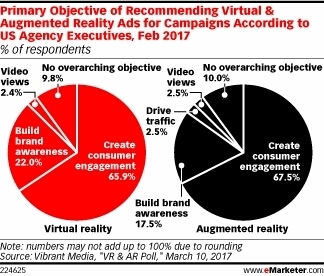

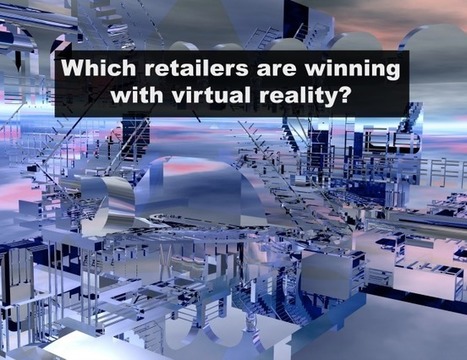

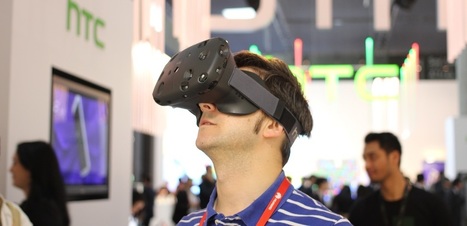


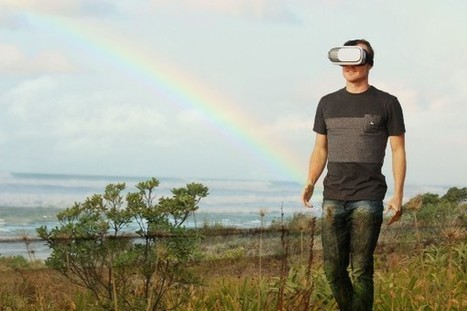
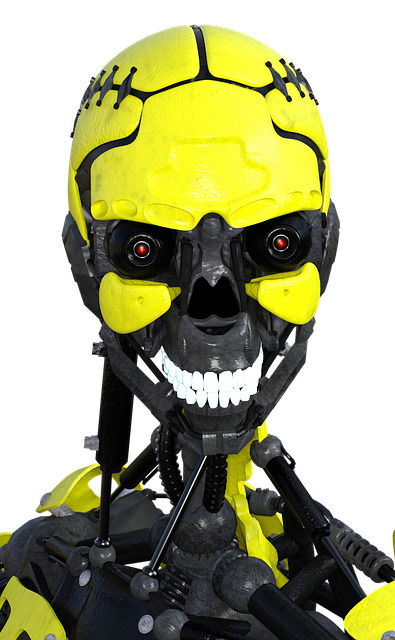
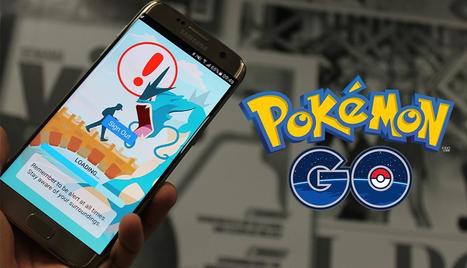







Visual intelligence will be key in a world where connectivity will happen increasingly via eyes (and voice) rather than by keyboard.